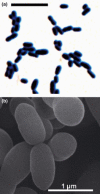Prostate cancer chemoprevention by soy isoflavones: role of intestinal bacteria as the "second human genome"
- PMID: 22372745
- PMCID: PMC7685082
- DOI: 10.1111/j.1349-7006.2012.02257.x
Prostate cancer chemoprevention by soy isoflavones: role of intestinal bacteria as the "second human genome"
Abstract
It has been found that the composition of intestinal microbiota can indicate the risk of disease to each individual. The concepts of biodynamics as used by the Benziger Winery in California, which treats every part of an agricultural environment as a living, breathing entity, can be usefully used in the construction of a system for cancer prevention, which seeks to use the relationship of coexistence (symbiosis) shared between people and intestinal symbiosis, that is, microbiota. Changes in the incidence rate of cancer among Japanese emigrants to Hawaii demonstrate the effect of the changes in the living environment. This leads to the hypothesis that an intake of soy-derived food products and the metabolization of the isoflavones they contain by intestinal microbiota is one of the factors for the significant difference in the incidence rate of prostate cancer among Asian and European/North American populations. It is further hypothesized that isoflavones, particularly equol, are a key factor in the difference in incidence rate between Asia and the West. It is suggested that not having equol converting bacteria in the intestine (non-equol producers) can be a risk factor for prostate cancer and that one direction for future research will be to examine the possibility of improving the intestinal environment to enable equol production.
© 2012 Japanese Cancer Association.
Figures





References
-
- Flint HJ, O'Toole PW, Walker AW. Special issue: the human intestinal microbiota. Microbiology 2010; 156: 3203–4. - PubMed
-
- Kutschera M, Engst W, Blaut M, Braune A. Isolation of catechin‐converting human intestinal bacteria. J Appl Microbiol 2011; 111: 165–75. - PubMed
-
- Tsuji H, Moriyama K, Nomoto K, Miyanaga N, Akaza H. Isolation and characterization of the equol‐producing bacterium Slackia sp. Strain NATTS. Arch Microbiol 2010; 192: 279–87. - PubMed
Publication types
MeSH terms
Substances
LinkOut - more resources
Full Text Sources
Medical

